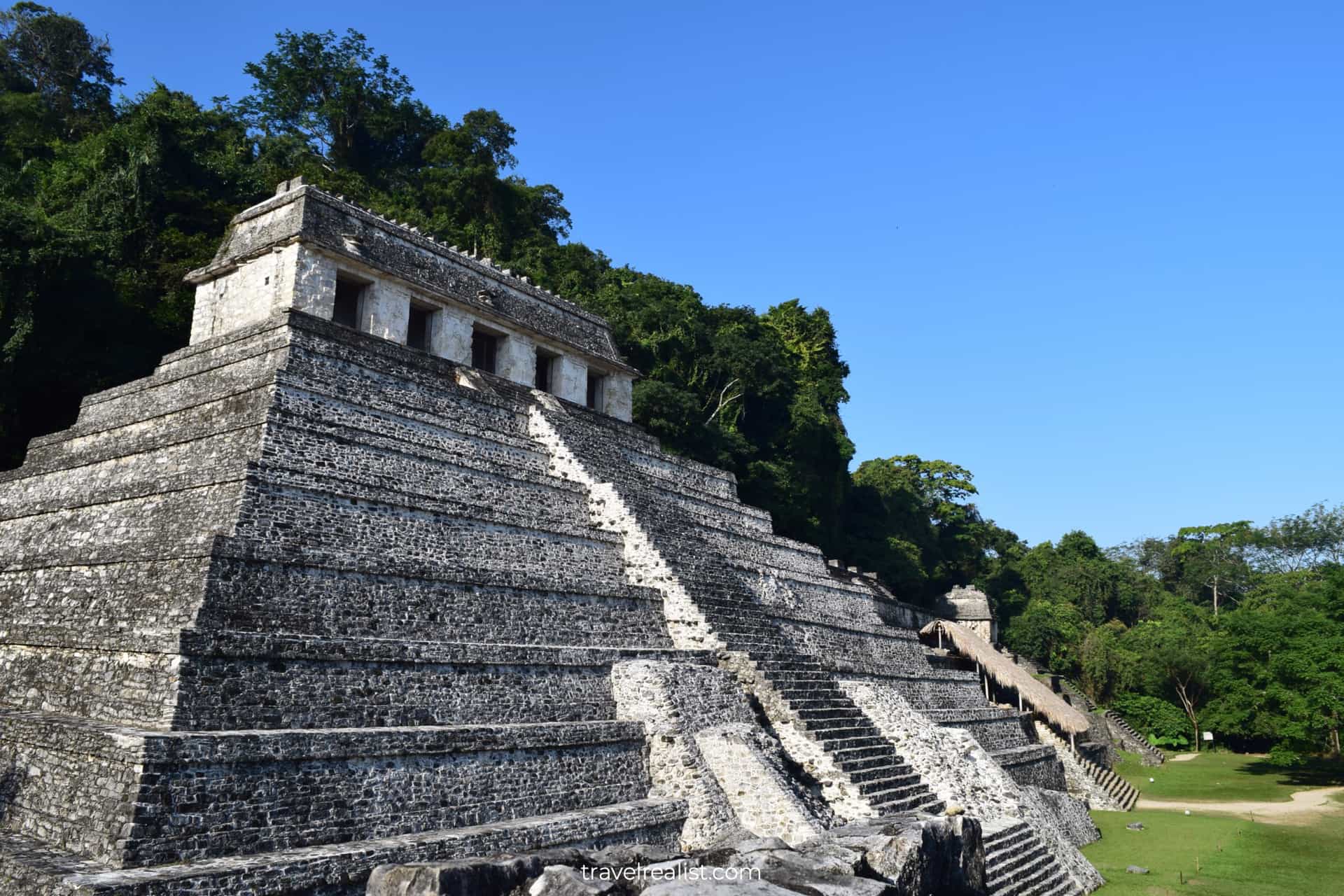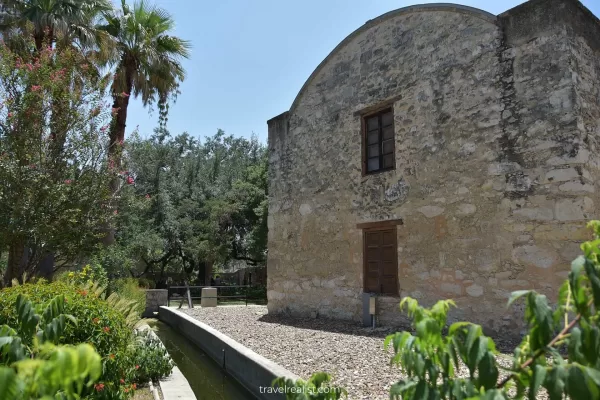7 Best Trails in McKinney Falls State Park in Austin, Texas
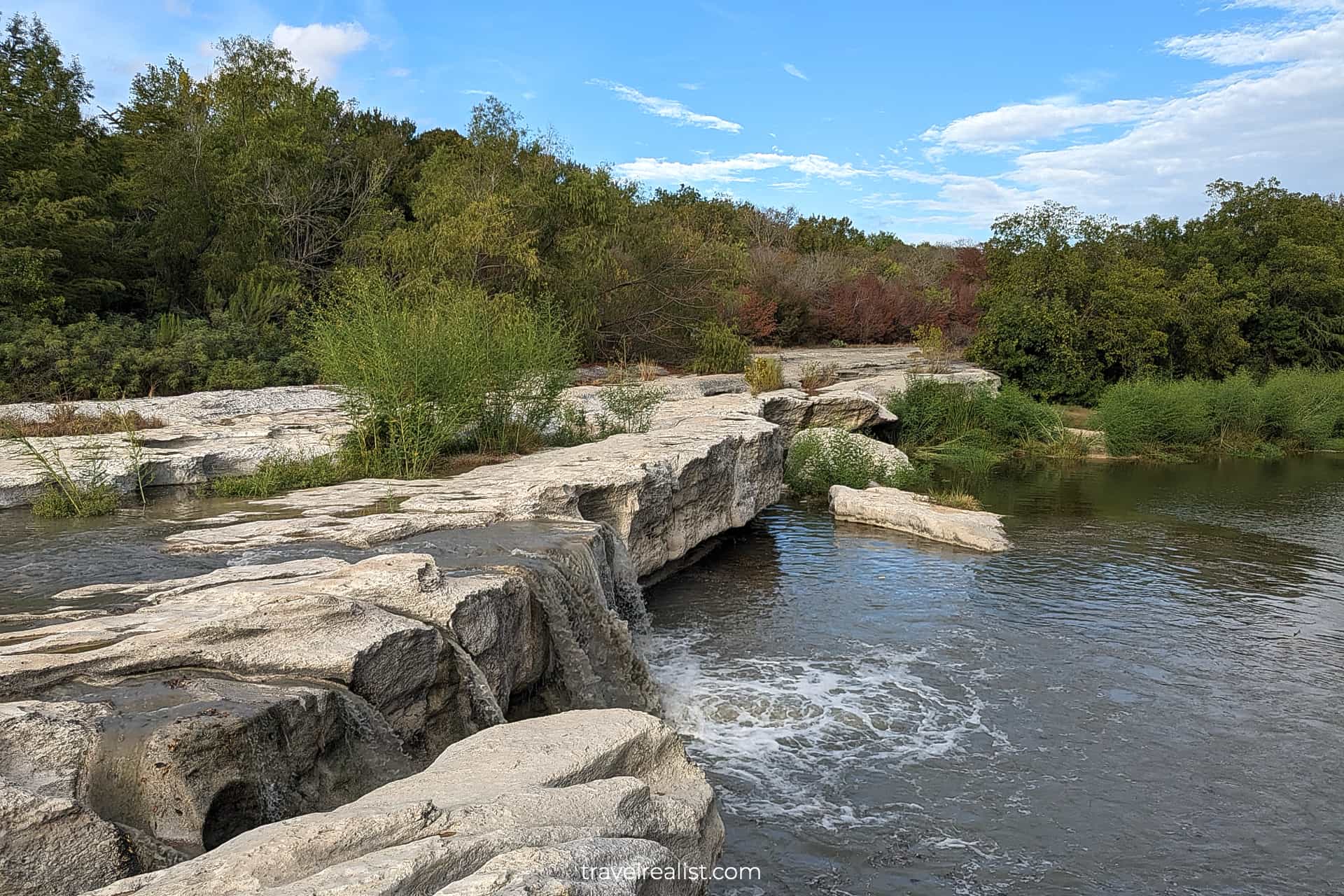
This realistic McKinney Falls State Park Trails Guide helps you plan your next adventure in this park.
McKinney Falls is a small but scenic state park in Austin, Texas. It gives you a chance to explore the common landscapes of Central Texas.
This post includes affiliate links that will earn us commission if you make a purchase via these links.
Sights & Places of Interest
Visitors come to McKinney Falls to see its waterfalls, creeks, live oak groves, cypress trees, and limestone formations. The ruins of the McKinney Homestead structures round up the list of the sights.
If this is not enough to convince you to visit this park, take a look at the Bluebonnet Meadow. This wildflower field is a magnet to locals and visitors when in bloom.
There is no better way to enjoy the sights of McKinney Falls State Park than taking one of the trails. You could chose from 9 miles (14 km) of hiking trails in the park. Some of the trails are also open to bikes.
Few people would hike all of the park trails in a day. This McKinney Falls State Park Trails Guide helps you pick the best trails for your first and next visits.
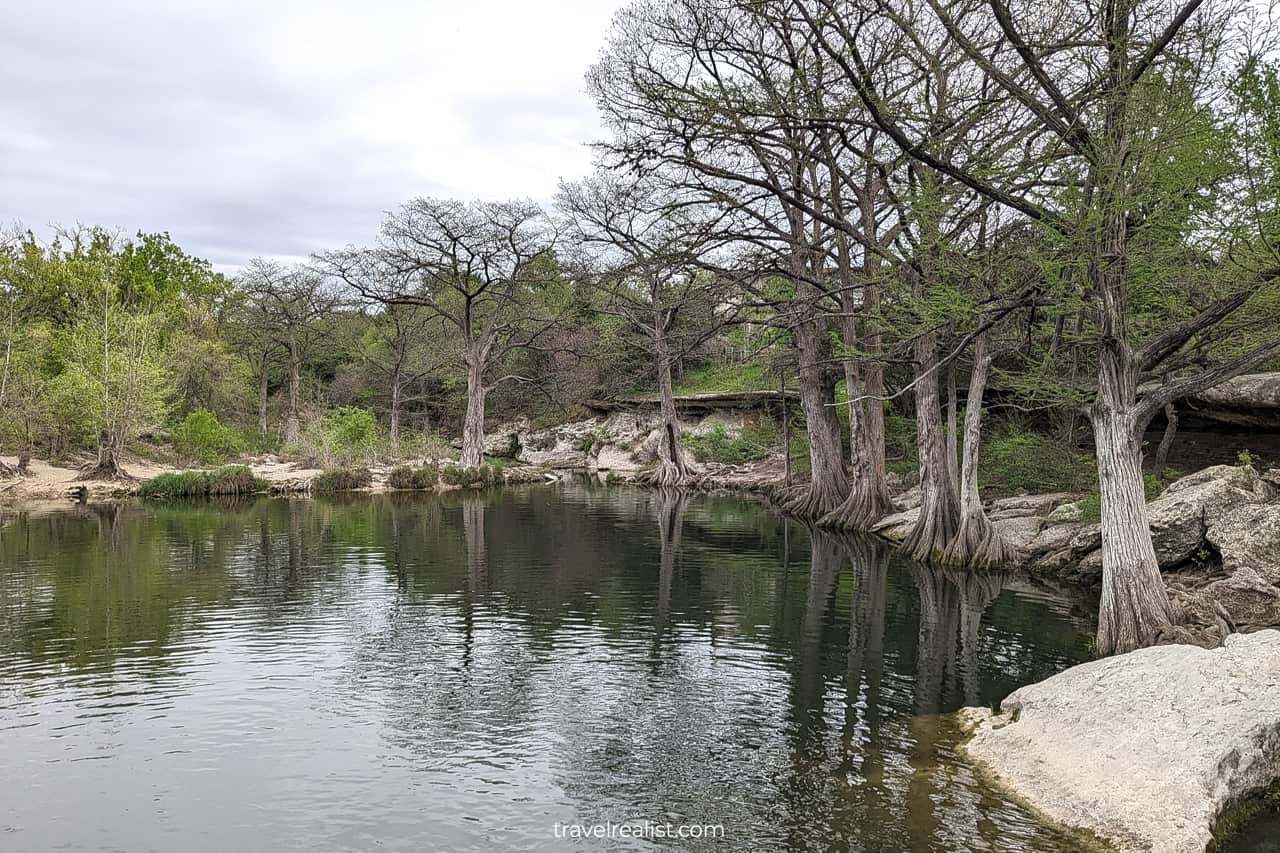
1. Rock Shelter Trail
- Length: 0.7 mi (1.1 km)
- Type: Out-and-back
- Difficulty: Easy
You should look no further than the Rock Shelter Trail for your first visit to McKinney Falls. This trail has everything you could hope for.
The Rock Shelter Trail starts at the Bluebonnet Meadow. It is a great place to see amazing fields of blue wildflowers every spring. Head there late March and early April for the best views.
The trail then brings you to the Upper Falls. These falls are a highlight of the park. A pool below the falls is a nice swimming hole to try out during Texas summer heat.
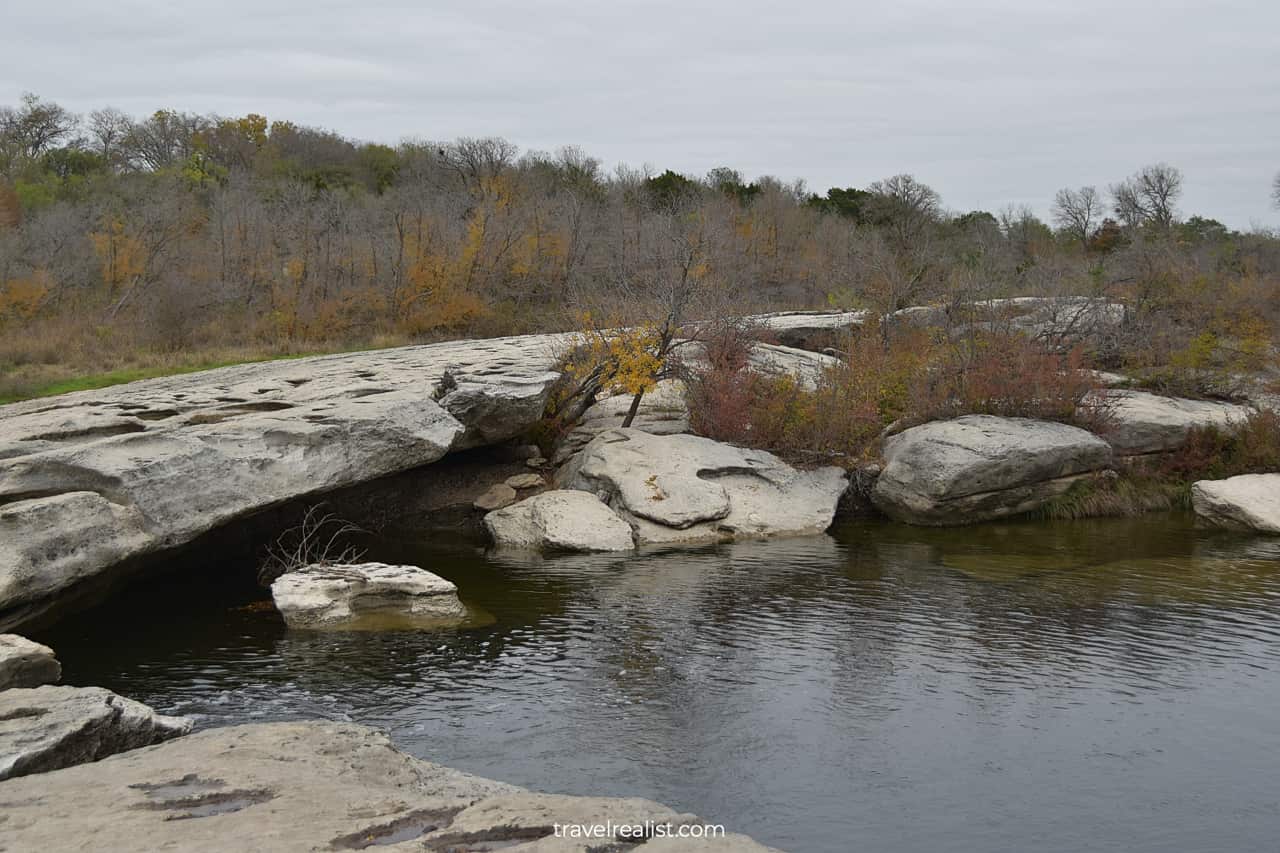
As you continue north on the trail, you will reach the Old Baldy. This 100-ft (30-m) tall cypress tree has been growing for some 500 years. You would not want to miss this view.
Three sights are more than enough to put this trail on the top of the list. But there is more to the Rock Shelter Trail. You need to reach the attraction that gave the trail its name.
A massive limestone rock served as a natural shelter for Native Americans. You might expect such a formation in Arches and Valley of Fire but not in Central Texas.
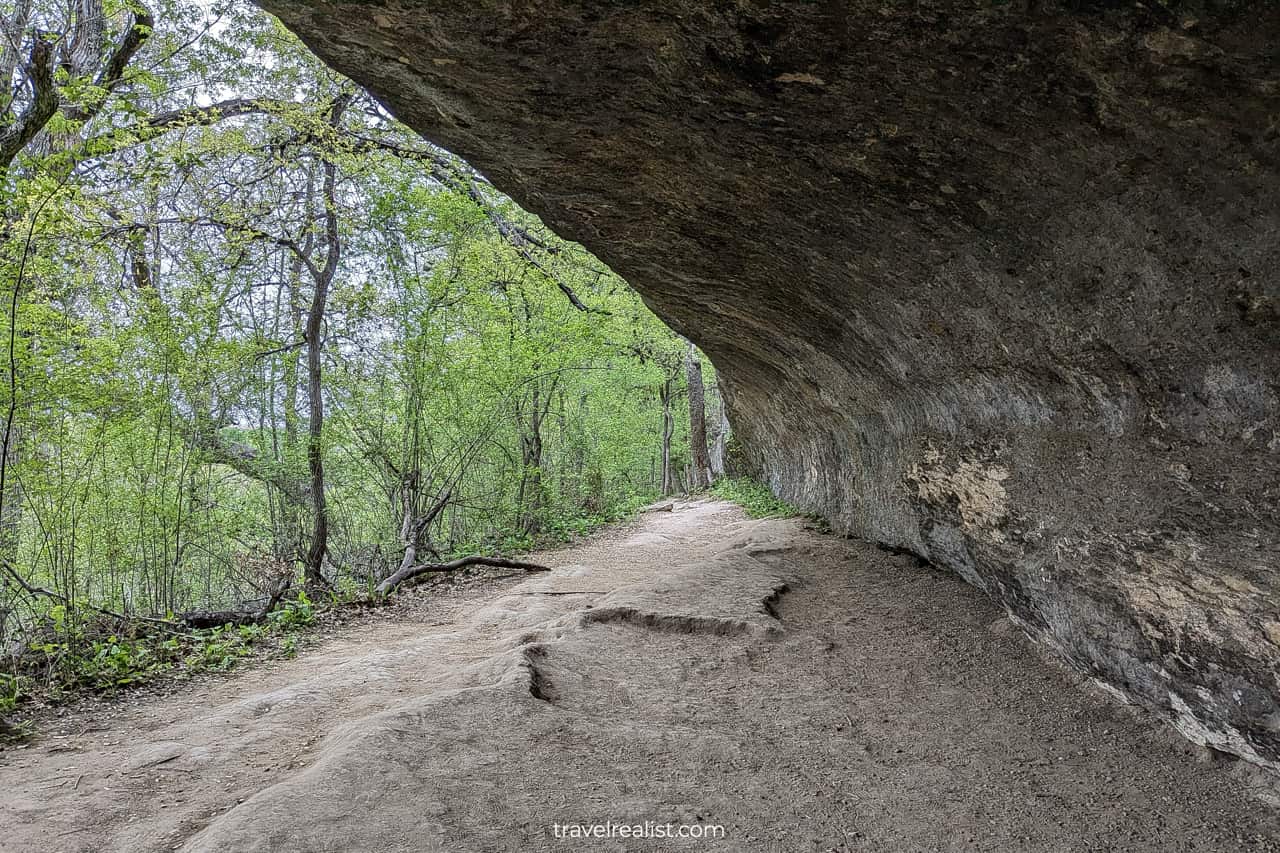
2. Onion Creek Hike and Bike Trail
- Length: 2.8 mi (4.5 km)
- Type: Loop
- Difficulty: Easy
If you could spend more time in the park, you should take the Onion Creek Hike and Bike Trail. This trail is the second longest path in McKinney Falls. Yet, hiking this trail is, quite literally, a walk in the park.
The first mile or so of the trail continues along Onion Creek. It is a paved path that brings you from the Bluebonnet Meadow past the Upper Falls.
The trail then gains nearly all of its 209 ft (64 m) in elevation. It becomes a winding gravel path along the park boundary and behind the campgrounds. This section is best for a trail run or a gravel bike ride.
Live oaks, cedar trees, birds, and wildlife are the only things of note in this area. But things get more interesting as you cross the main park road. You could see the ruins of the Horse Trainer’s Cabin.
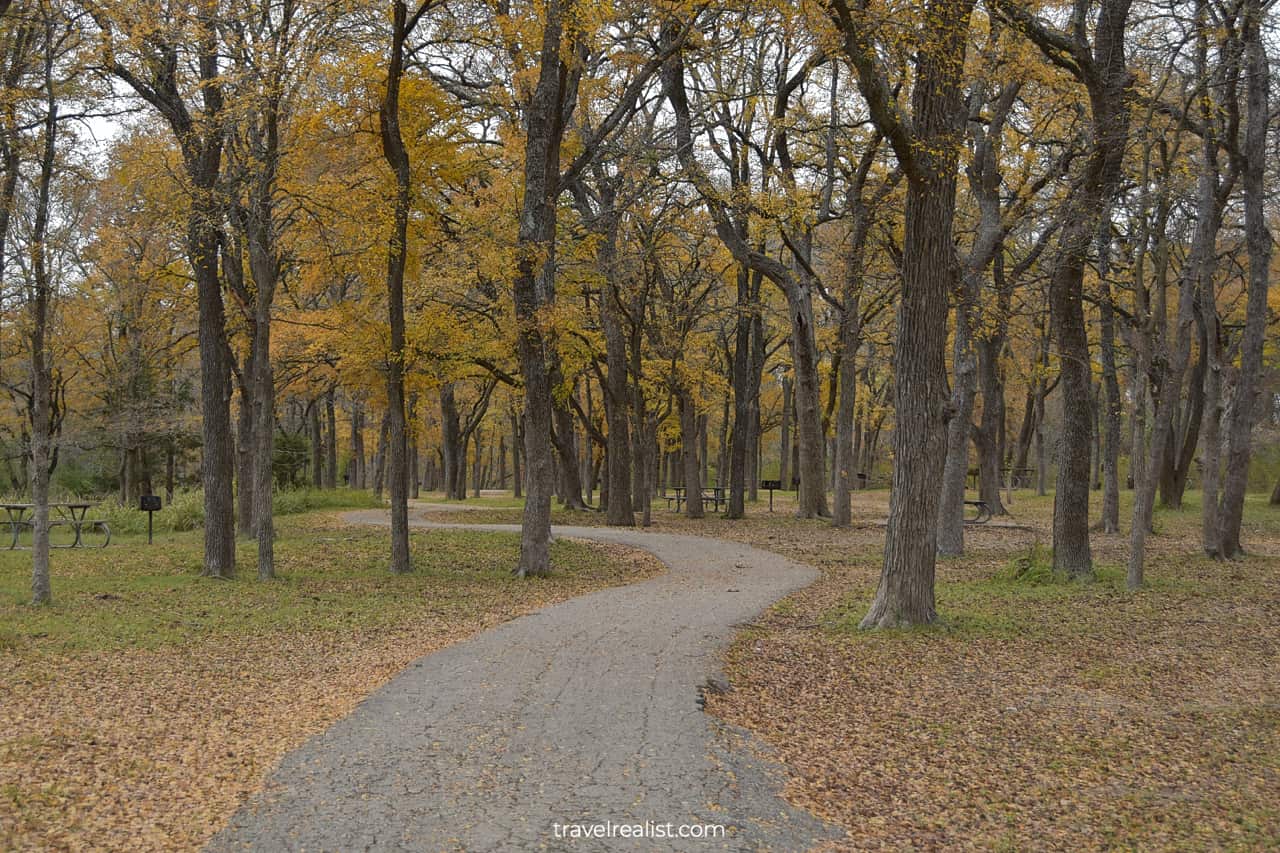
3. Homestead Trail
- Length: 3.1 mi (5 km)
- Type: Loop
- Difficulty: Moderate
No guide to McKinney Falls State Park Trails could be complete without the Homestead Trail. This loop path is the longest trail in the park.
But the distance is not the only thing that makes the Homestead Trail special. It brings you to a few other sights in the park that you should not miss.
These sights begin as soon as you start your hike. You will leave the cedar forest and arrive at a large limestone field. No trees and bushes will be in sight. Bring sunscreen and a hat even in the winter.
Enjoy the views of the confluence of Onion Creek and Williamson Creek. This creek section is a prime place to see turtles enjoying the sun.
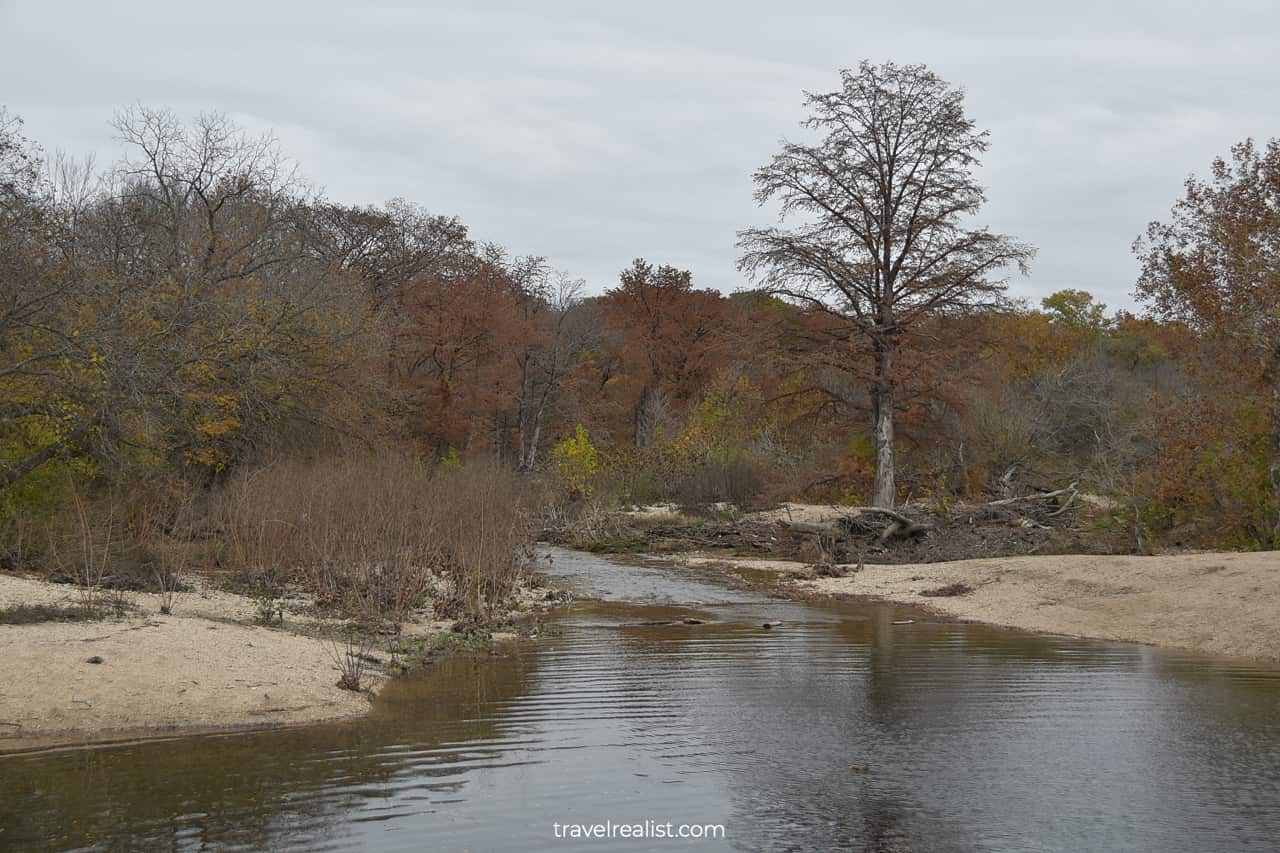
You will reach the Lower Falls within a few minutes. These falls are another swimming hole. There is a creek crossing right next to the falls.
It is a gateway to most other trails in the park. Be careful as you cross to the other side of Onion Creek via slippery rocks.
The trail becomes a true loop after the crossing. You could reach the Grist Mill and Picnic Area if you turn right. But there are no other notable sights in this section.
It might be a better idea to turn back and reach the McKinney Homestead. You could see the ruins of the Old Rock House from a distance.
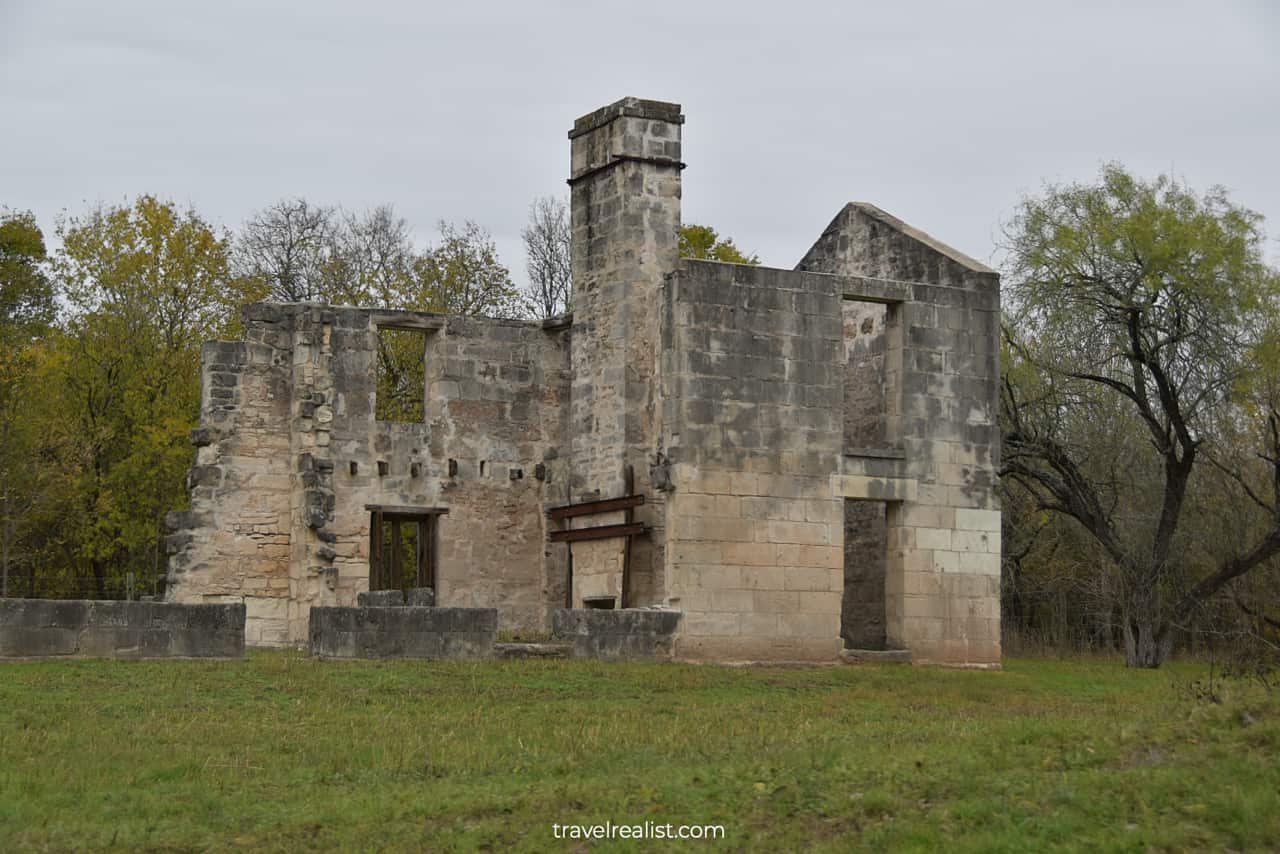
4. Flint Rock Loop Trail
- Length: 1.5 mi (2.4 km)
- Type: Loop
- Difficulty: Moderate
Other trails in McKinney Falls State Park might not wow you with their viewpoints or historical sights. But they put the beauty of Central Texas on display.
Take the Flint Rock Loop Trail. This loop path is quite remote. You would need to finish the Homestead Trail before arriving at the trailhead.
Once on the trail, you will go through a cedar grove to a pond. You should take a moment to capture a few reflections in the still waters.
The return leg of the loop brings you through a swamp and an oak grove. You will be hiking or biking on boardwalks. They look just like the paths in Palmetto State Park and Silver Springs State Park.
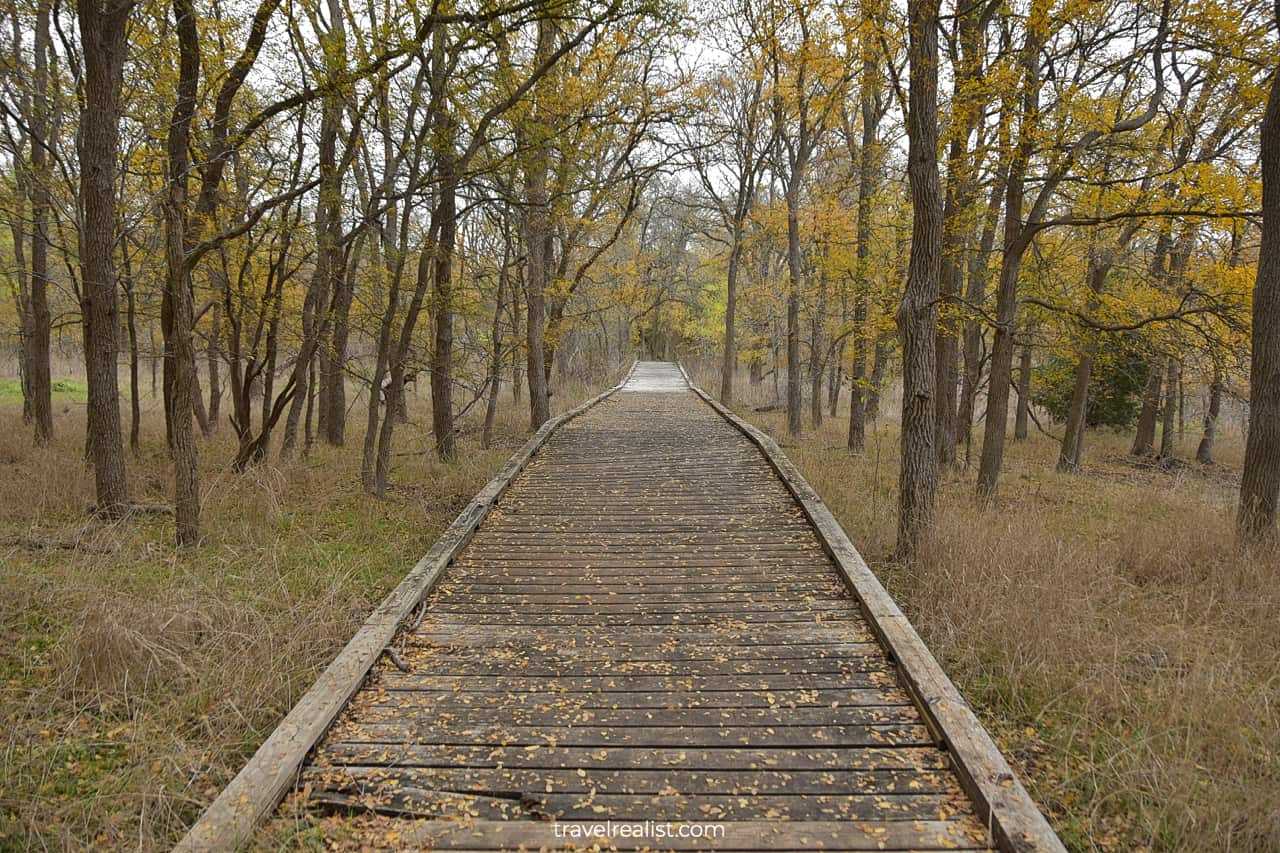
5. Williamson Creek Overlook Trail
- Length: 1.1 mi (1.7 km)
- Type: Loop
- Difficulty: Moderate
This loop path claims the title of the most remote trail in McKinney Falls State Park. It is closer to Stassney Lane than the rest of the park.
You will hike parts of the Service Road, Flit Rock Loop, and Homestead Trails just to reach its trailhead. As a result, you should prepare for a 6.2-mi (10-km) journey from the parking lot and back.
The Williamson Creek Overlook Trail is hardly a trail to take on your first visit to the park. But avid bikers and hikers should give this trail a chance.
The trail location and distance make sure that you do not run into crowds. A creek crossing and views serve as another reward. There is also plenty of shade since the trail mostly goes through a forest.
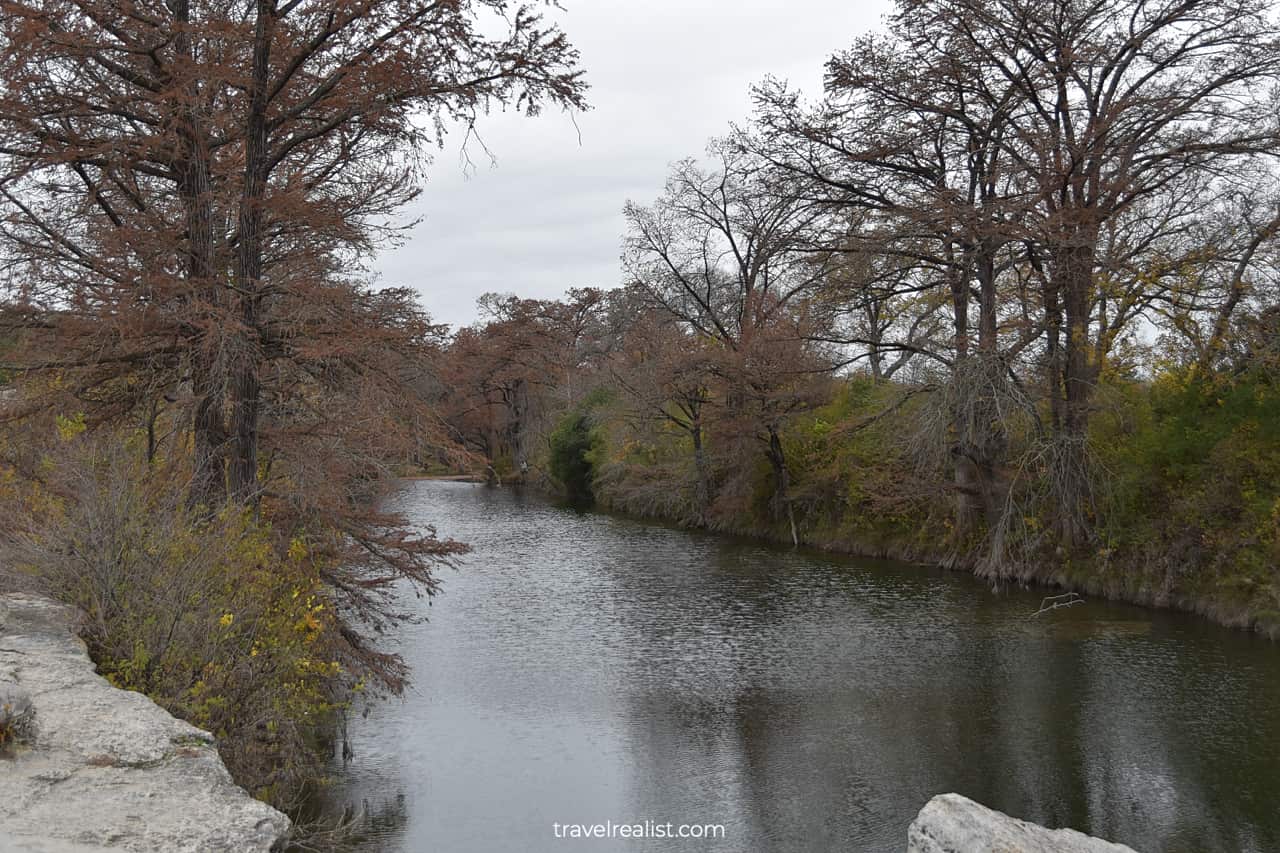
6. Picnic Trail
- Length: 0.5 mi (0.8 km)
- Type: Out-and-back
- Difficulty: Easy
The Picnic Trail is the shortest trail in McKinney Falls. Its name and distance might not sound too appealing. But chances are, you will take a section of this trail on nearly every visit to the park.
There is no need to pack a snack to enjoy the Picnic Trail. It runs parallel to the Rock Shelter Trail. Therefore, this trail is an easier alternative to those wishing to skip the stairs completely.
This path connects the Bluebonnet Meadow and the Horse Trainer’s Cabin with the Lower Falls. Most of the trail sections are not too picturesque. But there is one exception.
You should make a stop at the Bouldering Rocks. These cliffs are a great spot for rock climbing. Tall cypress trees, green waters of Onion Creek, and limestone rocks make a scenic combination.
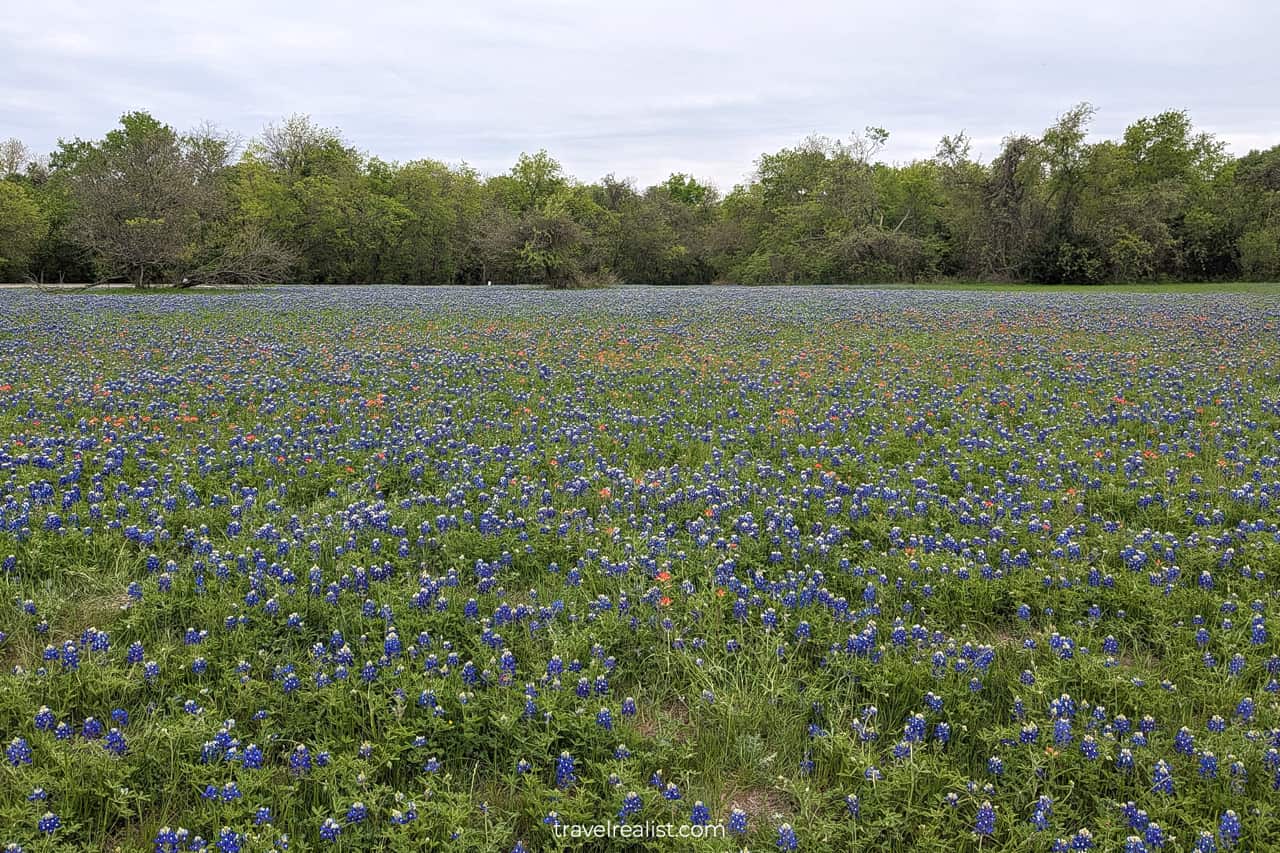
7. Service Road Trail
- Length: 1 mi (1.6 km)
- Type: Loop
- Difficulty: Easy
The Service Road Trail completes the list of the Best Trails in McKinney Falls State Park. This trail is unlikely to be the reason you come to the park.
But you might enjoy its presence if you ever find yourself too tired when hiking the Homestead Trail. The Service Road is a wider and slightly flatter alternative path.
This road gives you a faster way to reach the Flint Rock Loop Trail. You could be at the trailhead by covering just half the distance of the Homestead Trail.
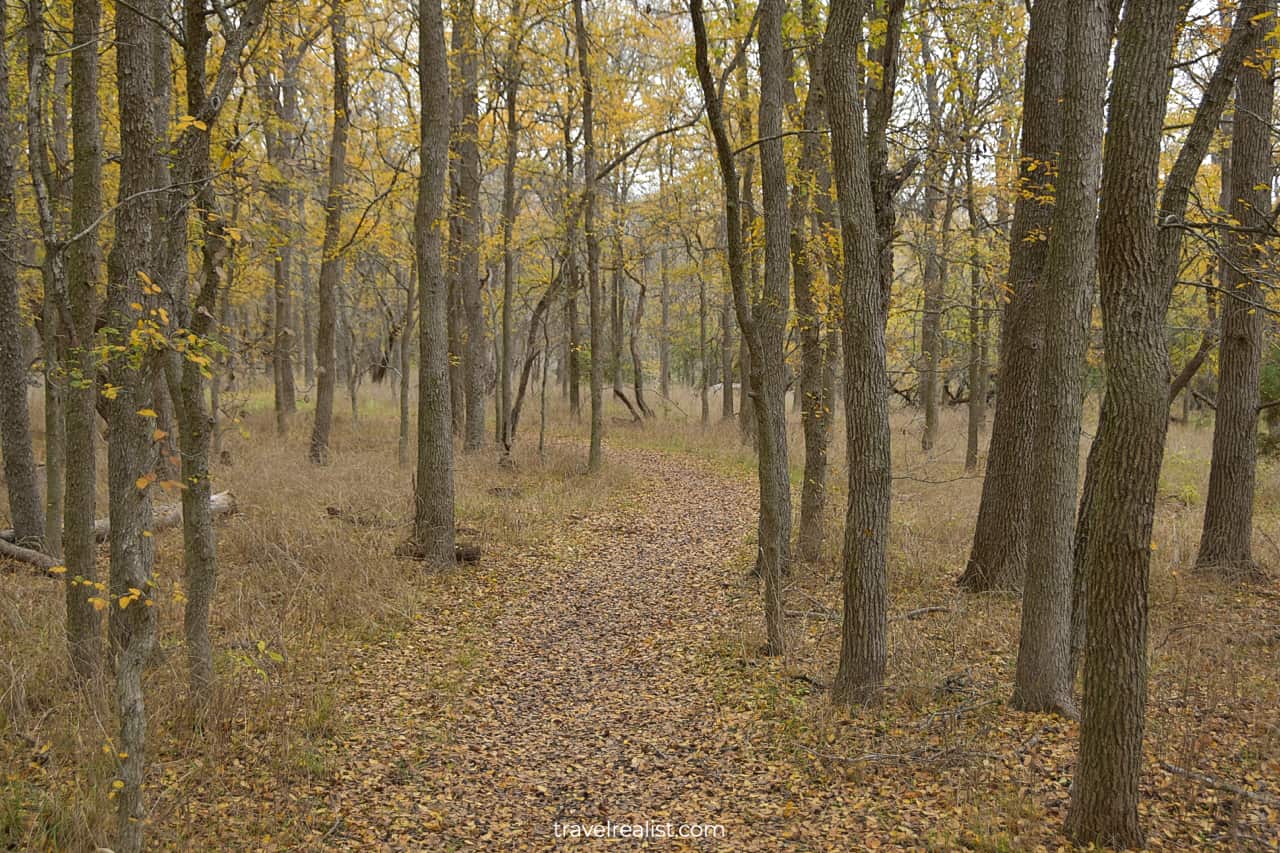
Continue with this McKinney Falls State Park Trails Guide. You will learn more about ways to get to the sights, entrance requirements, and places to stay.
Getting to McKinney Falls
McKinney Falls is a state park in Central Texas. It is one of the easiest state parks in the region to visit. In fact, McKinney Falls is inside Austin city limits.
Most Austinites have a luxury to visit this park whenever they need to reconnect with nature. You could reach the park within 30 minutes from most parts of the metro area.
But the visitors to the city do not need to go out of their way to see McKinney Falls either. The park is just a 15-minute drive from the airport.
A stop at this park could be a great start to your visit to the capital of Texas. You could hit the trails before heading to the nearby BBQ or taco joints.
Austin Airport has a growing number of direct flights. You could fly to the city from all major U.S. cities like New York, Los Angeles, and Chicago.
Regional hubs like Denver, Atlanta, and Seattle give you another easy way to reach the city. The same is true for a handful of international destination like London, Frankfurt, and Amsterdam.
There is just one downside to visiting McKinney Falls. You need a car to reach the park and its hiking trails. No bus route stops close to the park entrance. Of course, a rideshare is always an option.
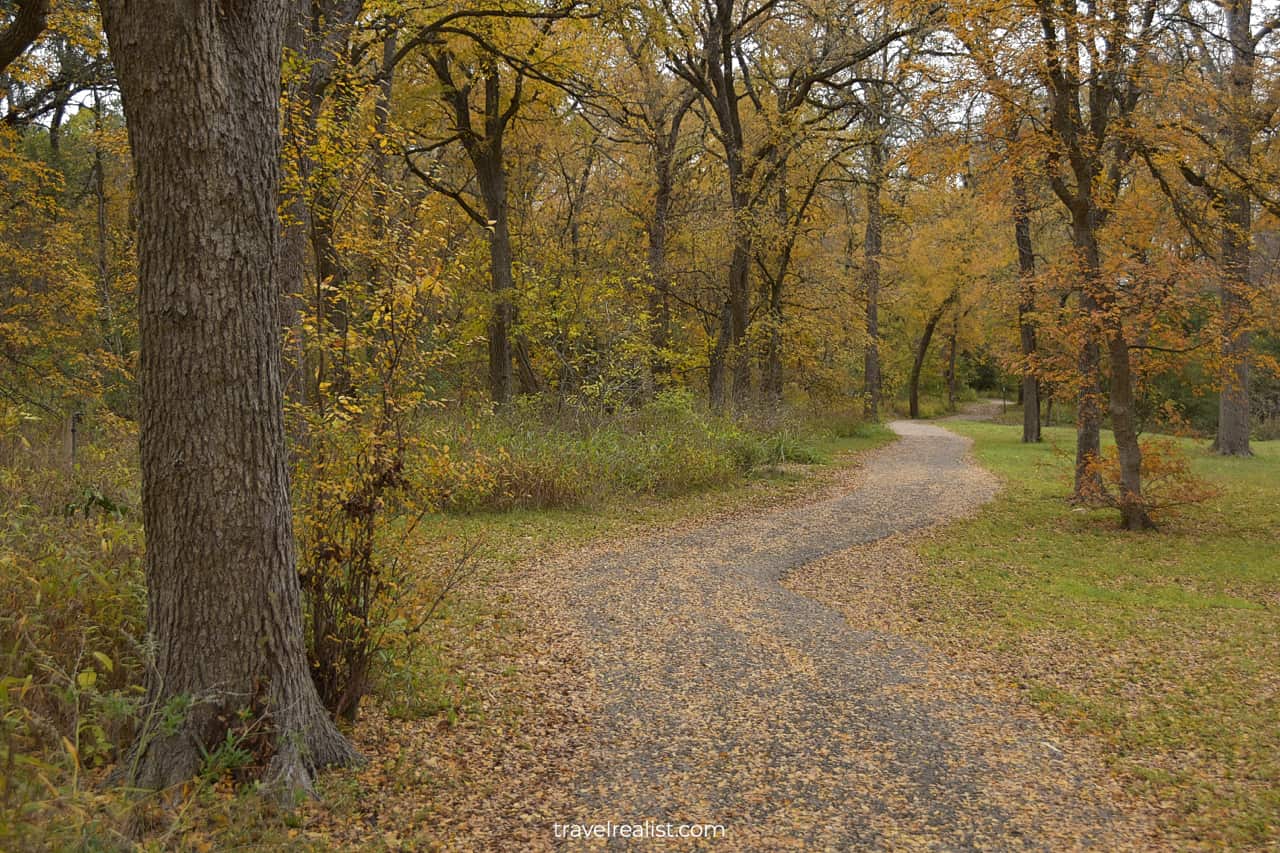
Where to Stay near McKinney Falls
The location of this park in Southeast Austin makes finding a place to stay quite easy. There are no hotels and vacation rentals right next to the park. But a handful of places to stay are a short drive away.
If McKinney Falls is your main destination, it could be a good idea to stay south of the Colorado River. In this case, look for places to stay near the airport, South Congress, and South Lamar areas.
Cambria Hotel Austin Airport and Tru By Hilton Austin Airport, Tx are the closest hotels to the park. Both are less than 10 minutes from McKinney Falls.
The intersection of Interstate Highway I-35 and Ben White Boulevard is another area to consider. It is home to Homewood Suites by Hilton Austin South and Aloft Austin South.
Fairfield Inn and Suites Austin South and TownePlace Suites Austin South are also nearby. You could reach the park in under 15 minutes from these hotels.
You might want to stay further north if you plan on seeing other sights in the city. In this case, consider Downtown and Domain neighborhoods.
Hotel ZaZa Austin and Canopy By Hilton Austin Downtown are fantastic options in the center of the city. And you cannot go wrong with Archer Hotel Austin or Element Austin at The Domain.
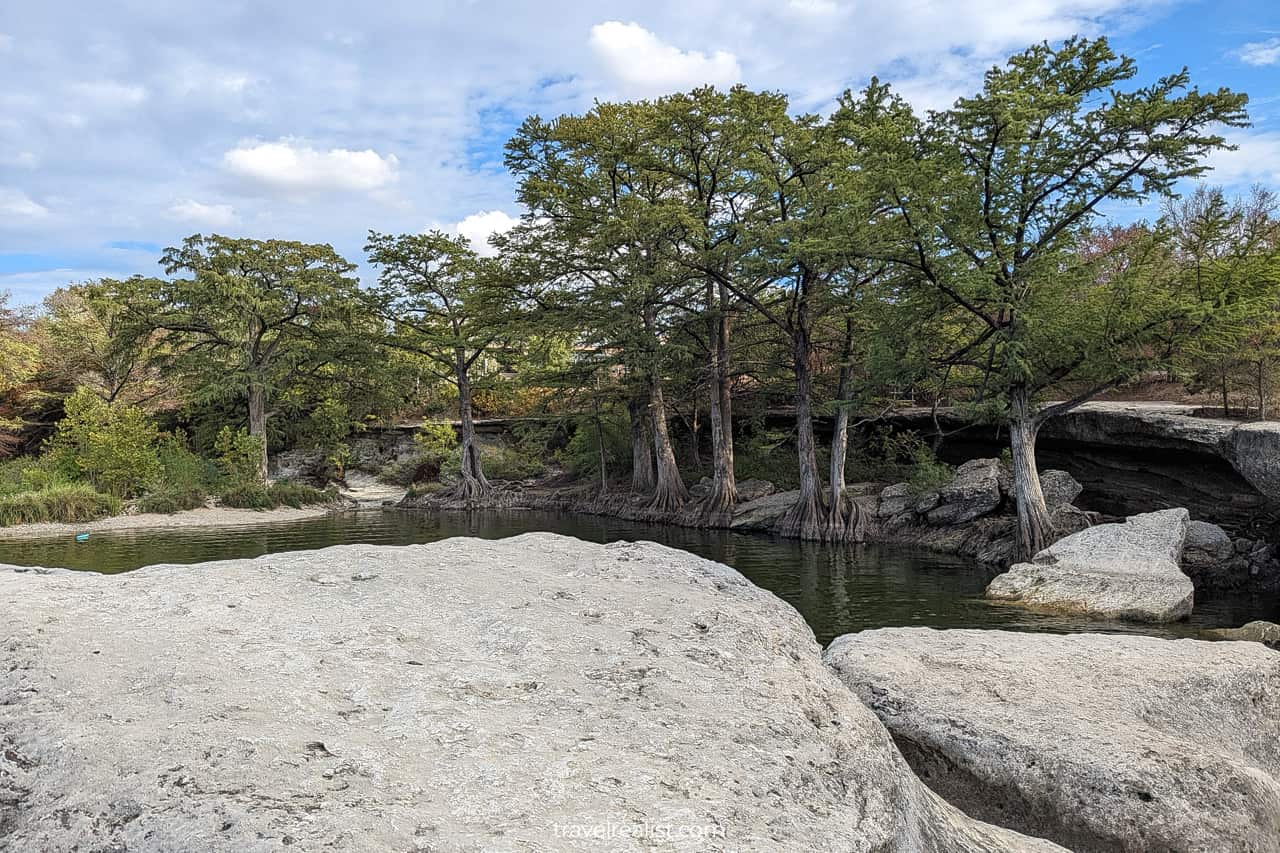
Entrance Requirements & Passes
The park is open from 8 a.m. to 10 p.m. every day of the year. Only campers with reservations could stay in the park overnight. Everyone else should get a day pass.
It costs $6 per adult to visit McKinney Falls. Kids below 13 years old enjoy a free admission. These fees could add up if you visit the park as part of an adult group. But there is a way to save on the fees.
Consider getting a Texas State Parks Pass. It costs $70 a year. The pass gives you free admission to all state parks in the Lone Star State for one year. Even better, it covers up to 8 adults in one car.
You could just drive up and show your pass to a ranger in some parks. But McKinney Falls is usually not one of them. The park location inside a major metro area makes it a popular day trip destination.
McKinney Falls often reaches capacity on weekends. As a result, you need to get a day pass reservation. It guarantees you entry into the park during a chosen window of time.
You could stay in the park until 10 p.m. regardless of when you enter. Just like with Pedernales Falls, it is a good idea to book your day pass ahead of your visit. Reservations open 30 days before the date.
You could get a spot a few days in advance for a weekday visit. Book a week in advance for most weekends. A longer lead time is helpful during the spring break and around major holidays.
The same advice applies during the Bluebonnet season in March and April. And you should book a spot as soon as the reservations open for the once-in-lifetime events like the Solar Eclipse.
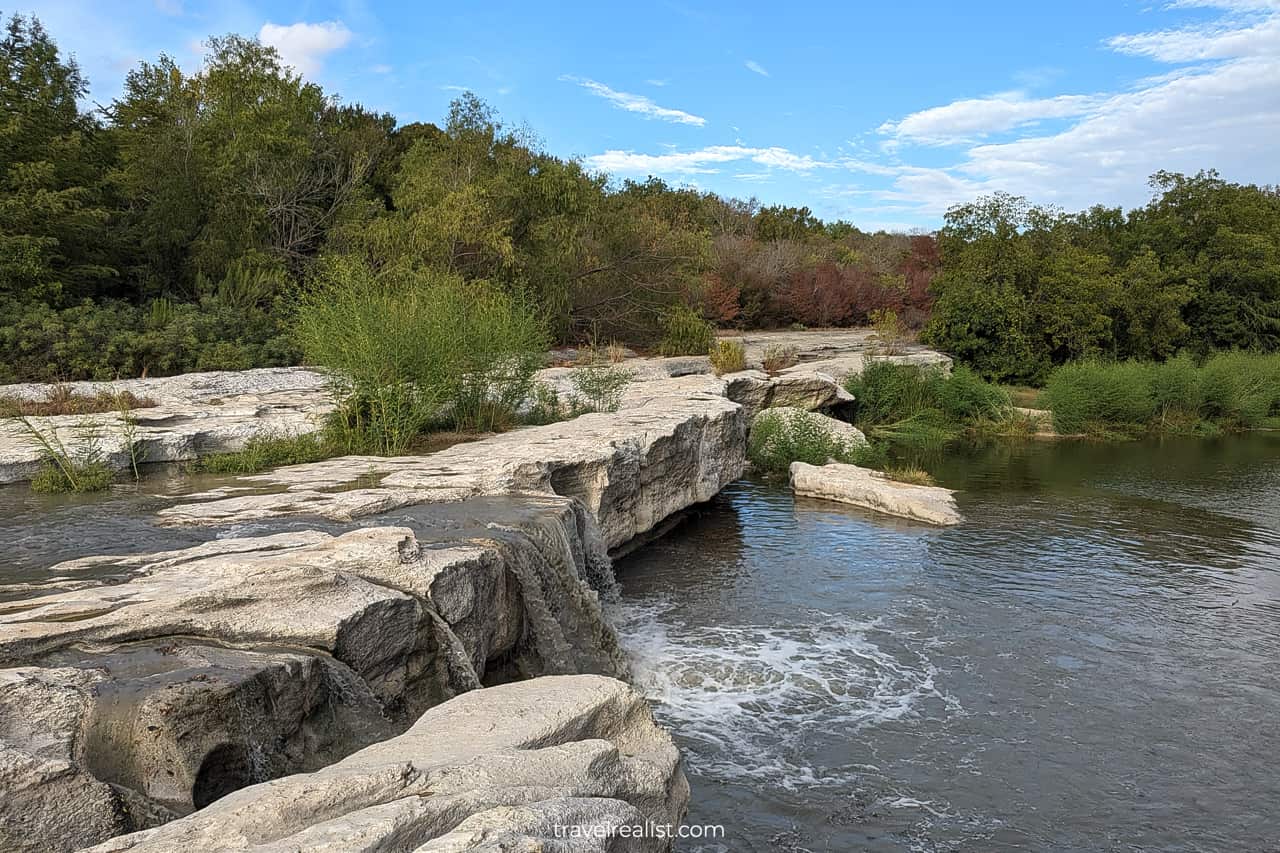
Takeaways: McKinney Falls State Park Trails
McKinney Falls State Park is a destination off the beaten path for any visitor to Austin, Texas. This park is inside the city limits. It has a good combination of natural and historic sights.
But the park is in the shadow of other attractions in the capital of Texas. It is hard to compete with the Texas State Capitol, Congress Bridge, and the University of Texas.
Nature lovers looking to escape the city while staying in Austin will enjoy McKinney Falls. You could hike one or a few of the 7 trails in the park. There is plenty to see during every season.
You could enjoy bluebonnet flowers in the spring. Take a swim in the waterfall pools in the summer. See the red cypress trees in the fall. And head to the rock shelter and homestead ruins in the winter.
Best of all, you could take a stroll through the oak, cypress, and cedar groves year round. Regardless of what you choose to do in McKinney Falls, book a day pass well in advance.
And know your limits before hiking the trails in Central Texas. Do not play games with the Texas sun. Bring plenty of water, apply sunscreen, and wear a hat.
There is no fun in dealing with a sunburn after a day in the park. Save yourself some pain by making a few preparations ahead of your hike.
Take a look at this McKinney Falls State Park Trails Video Guide. And visit the YouTube channel for the latest videos.
Frequently Asked Questions
McKinney Falls State Park is in Austin, Texas. The park is in southeastern part of the city, 15 minutes west of Austin Airport.
McKinney Falls State Park is a lesser known destination for visitors to the capital of Texas. Yet, there are a lot of things to do at this park:
– Enjoy the views of the Upper and Lower Falls.
– Hike almost 9 miles of trails.
– Admire the 500-year-old cypress tree.
– Stop by the Rock Shelter that protected Native Americans.
– Go rock climbing at Bouldering Rocks.
– Cross Onion Creek via El Camino Real limestone road.
– Take a picture with signature blue wildflowers at Bluebonnets Meadow.
– See the remains of the McKinney Homestead.
– Bring your bike to reach the Flint Rock Loop and the Williamson Creek Overlook Trails.
– Spot turtles, deer, and other wildlife.
– Bring your pet with you on a trail.
– Camp or picnic at one of the designated areas.
McKinney Falls is a state park within Austin City Limits. The park is just outside of Southeast Austin between Interstate Highway I-35 and Highway US-183.
You could reach McKinney Falls in under 20 minutes from Downtown and the airport with no traffic. Double this time during morning or evening rush hours.
McKinney Falls State Park is a great place to escape the summer heat. You should head to this park to swim in Onion Creek. The creek forms pools below the Upper Falls and Lower Falls.
These pools are the best places to swim in the park. But exercise caution as you swim. Slippery rocks, water currents, algae, and snakes are some of the risks to watch out for.
Safe realist travels!


